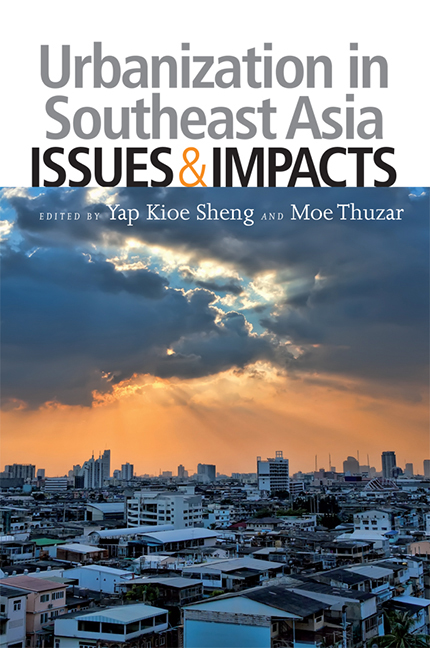Book contents
- Frontmatter
- Contents
- Message from Head, ASEAN Studies Centre
- Message from Director, Centre for Liveable Cities
- About the Contributors
- Introduction
- Urbanization in Southeast Asian Countries: Recommendations
- 1 The Challenges of Promoting Productive, Inclusive and Sustainable Urbanization
- Cities as Engines of Development
- Inclusive Cities
- 6 Addressing Urban Poverty in ASEAN: Diversity of Conditions and Responses, Unity of Purpose
- 7 The HDB Community: A Work in Progress
- 8 Rural-Urban and Intra-Urban Linkages in Southeast Asia: Old Field, New Dynamics
- Cities and the Environment
- Governance, Decentralization, and Urbanization
- Urbanization from an ASEAN Perspective
- Index
7 - The HDB Community: A Work in Progress
from Inclusive Cities
Published online by Cambridge University Press: 21 October 2015
- Frontmatter
- Contents
- Message from Head, ASEAN Studies Centre
- Message from Director, Centre for Liveable Cities
- About the Contributors
- Introduction
- Urbanization in Southeast Asian Countries: Recommendations
- 1 The Challenges of Promoting Productive, Inclusive and Sustainable Urbanization
- Cities as Engines of Development
- Inclusive Cities
- 6 Addressing Urban Poverty in ASEAN: Diversity of Conditions and Responses, Unity of Purpose
- 7 The HDB Community: A Work in Progress
- 8 Rural-Urban and Intra-Urban Linkages in Southeast Asia: Old Field, New Dynamics
- Cities and the Environment
- Governance, Decentralization, and Urbanization
- Urbanization from an ASEAN Perspective
- Index
Summary
INTRODUCTION
Any foreign visitor to Singapore, on leaving Changi Airport and commuting several kilometres on most roads, would not fail to notice that public housing is one of the most recognizable and ubiquitous features covering much of the island republic. Indeed, official figures indicate that 83.2 per cent of Singapore residents, comprising citizens and those granted permanent residency, live in flats built by the Housing and Development Board (HDB), a government statutory body, while most of the rest reside in private condominium apartments or landed properties (Department of Statistics 2010, p. 7).
Moreover, notwithstanding the “public housing” label, an overwhelming 97 per cent of HDB dwellers live in “sold”, as opposed to “rental”, properties. Some 77 per cent of the “sold” units are of the larger flat type, ranging from four-room to executive apartments (HDB 2010a, p. 14). These figures are the outcome respectively of the government's home ownership policy, as well as a manifestation of residential and social mobility, which has contributed to the emergence of a visually homogeneous middle-class society in housing terms.
IS COMMUNITY POSSIBLE AND ALIVE IN THE HDB ESTATE?
This highly successful housing programme began in the 1960s to handle the massive resettlement of the population from kampongs or villages and overcrowded inner-city neighbourhoods with poor utilities and sanitation amenities. A consequence of this programme was the rupturing of old neighbourly ties and community, real or imagined. Not surprisingly, providing citizens with a roof over their heads has turned out to be not the HDB's only mission. It also aims at community building, a process which corresponds to nation building in post-independence Singapore.
Wong and her colleagues (1997, p. 443) observed that “the HDB's housing philosophy has evolved from the emphasis of the early 1960's on providing basic shelter to the present emphasis on providing a total living environment and supporting community development within the housing estates”. They also noted that “the concepts of neighbourhood and precinct planning, the provision of common spaces such as void decks, playgrounds and segmented corridors, have been introduced in order to encourage social interaction among residents who share common facilities”, and that “HDB area officers are being trained in community relations and extensive co-operation is given to grass-roots organizations and voluntary agencies to help nurture a community spirit among the residents” (Wong et al. 1997, p. 444).
- Type
- Chapter
- Information
- Urbanization in Southeast AsiaIssues and Impacts, pp. 190 - 204Publisher: ISEAS–Yusof Ishak InstitutePrint publication year: 2012



